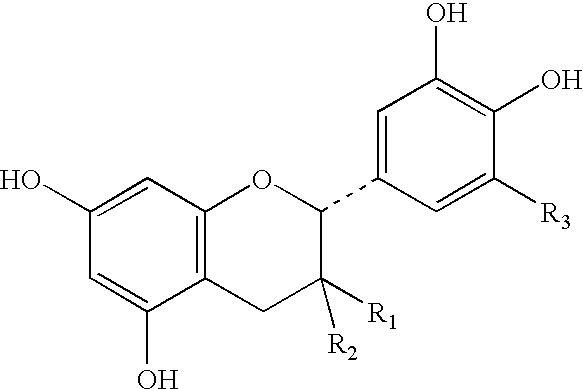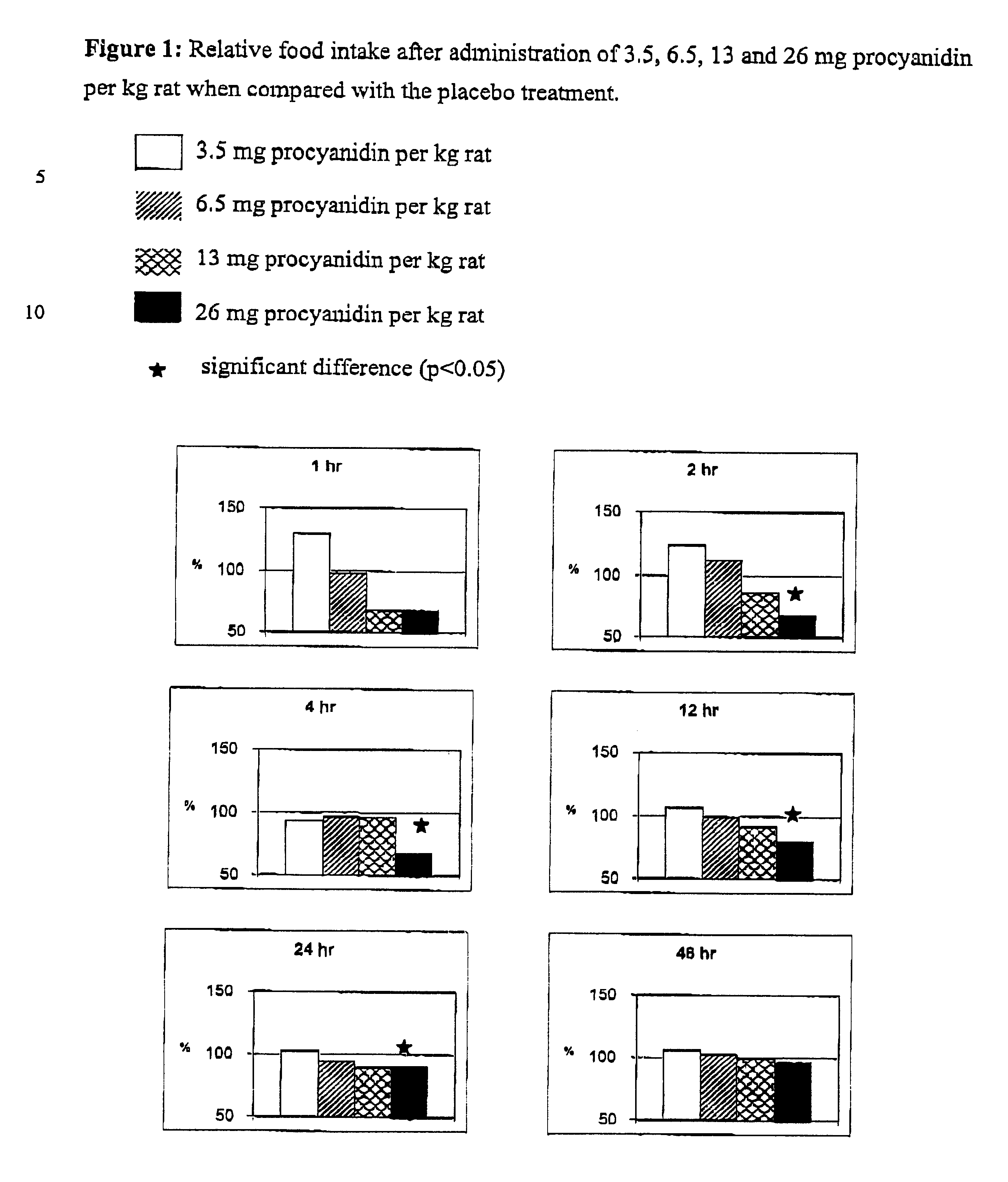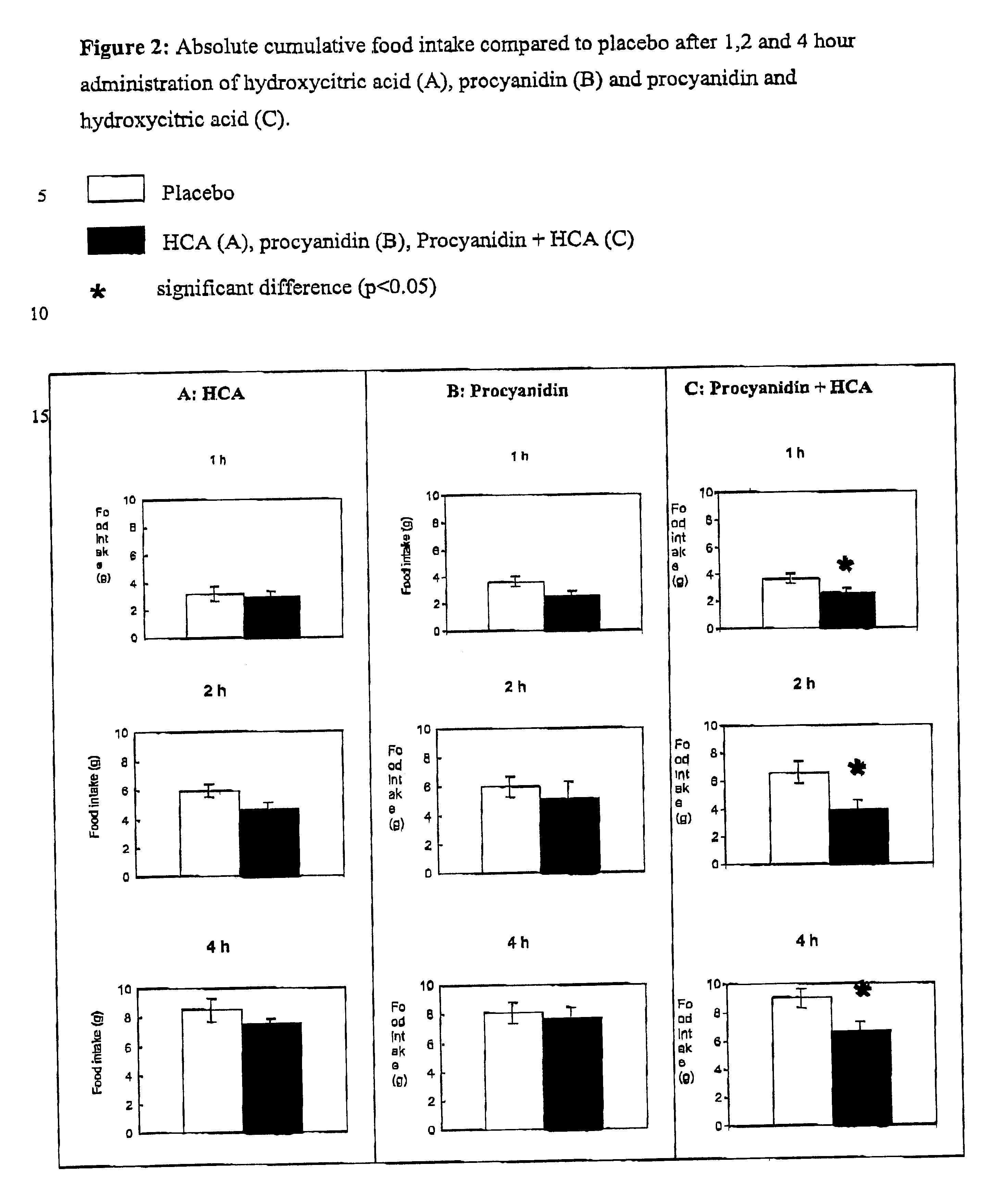Reducing appetite in mammals by administering procyanidin and hydroxycitric acid
a technology of hydroxycitric acid and procyanidin, which is applied in the field of reducing appetite in mammals by administering procyanidin and hydroxycitric acid, can solve the problems of severe downsides of the application of functional ingredients, many humans and companion animals suffering from overweight or having difficulty maintaining a desirable weight,
- Summary
- Abstract
- Description
- Claims
- Application Information
AI Technical Summary
Problems solved by technology
Method used
Image
Examples
example 1
Appetite Reducing Effects of Procyanidin
The appetite suppressive effects of a procyanidin containing extract from pine bark, comprising 65 wt. % procyanidin was tested in male Wistar rats. In a placebo-controlled cross-over study, either placebo or increasing dosages of procyanidins were administered as a single bolus intragastrically at 30 min before onset of the active (dark) period. Subsequently, voluntary food intake was recorded continuously for 48 hours. Following this period, the experiment was repeated as part of the cross-over design (that is, rats which first received the procyanidins now received the placebo and vice versa).
Results are shown as relative food intake when compared with the placebo treatment. FIG. 1 show a clear dose-dependent decrease in food intake shortly after administration of the procyanidin extract.
A dose of about 26 mg procyanidin per kg rat resulted in a significant (p<0.05) reduction of food intake for over 12 hours, indicating a reduced appetite.
example 2
Appetite Reducing Effects of Coadministered Procyanidin and Hydroxycitric Acid
The appetite suppressive effects of a combination of procyanidin (pine bark extract containing 65 wt. % procyanidin) and hydroxycitric acid (Regulator.TM. ex HOB Ireland, Dublin, Ireland) was tested in male Wistar rats. In a placebo-controlled cross-over study, either 13 mg procyanidin per kg rat (A), 155 mg hydroxycitric acid per kg rat (B) or 13 mg procyanidin per kg rat and 155 mg hydroxycitric acid per kg rat (C) were administered as a single bolus intragastrically at 30 min before onset of the active (dark) period.
Subsequently, voluntary food intake was recorded continuously for 48 hours. Following this period, the experiment was repeated as part of the cross-over design (that is, rats which first received the procyanidins now received the placebo and vice versa).
Results are shown as absolute cumulative food intake after 1,2 and 4 hours (see FIG. 2). Statistical analysis (paired student t) was made of...
example 3
Appetite Reducing Supplement for Humans
Soft gelatin capsule containing,
800 mg Vitis vinifera extract (comprising 85 wt. % procyanidins)
PUM
| Property | Measurement | Unit |
|---|---|---|
| weight | aaaaa | aaaaa |
| weight | aaaaa | aaaaa |
| body weight | aaaaa | aaaaa |
Abstract
Description
Claims
Application Information
 Login to View More
Login to View More - R&D
- Intellectual Property
- Life Sciences
- Materials
- Tech Scout
- Unparalleled Data Quality
- Higher Quality Content
- 60% Fewer Hallucinations
Browse by: Latest US Patents, China's latest patents, Technical Efficacy Thesaurus, Application Domain, Technology Topic, Popular Technical Reports.
© 2025 PatSnap. All rights reserved.Legal|Privacy policy|Modern Slavery Act Transparency Statement|Sitemap|About US| Contact US: help@patsnap.com



